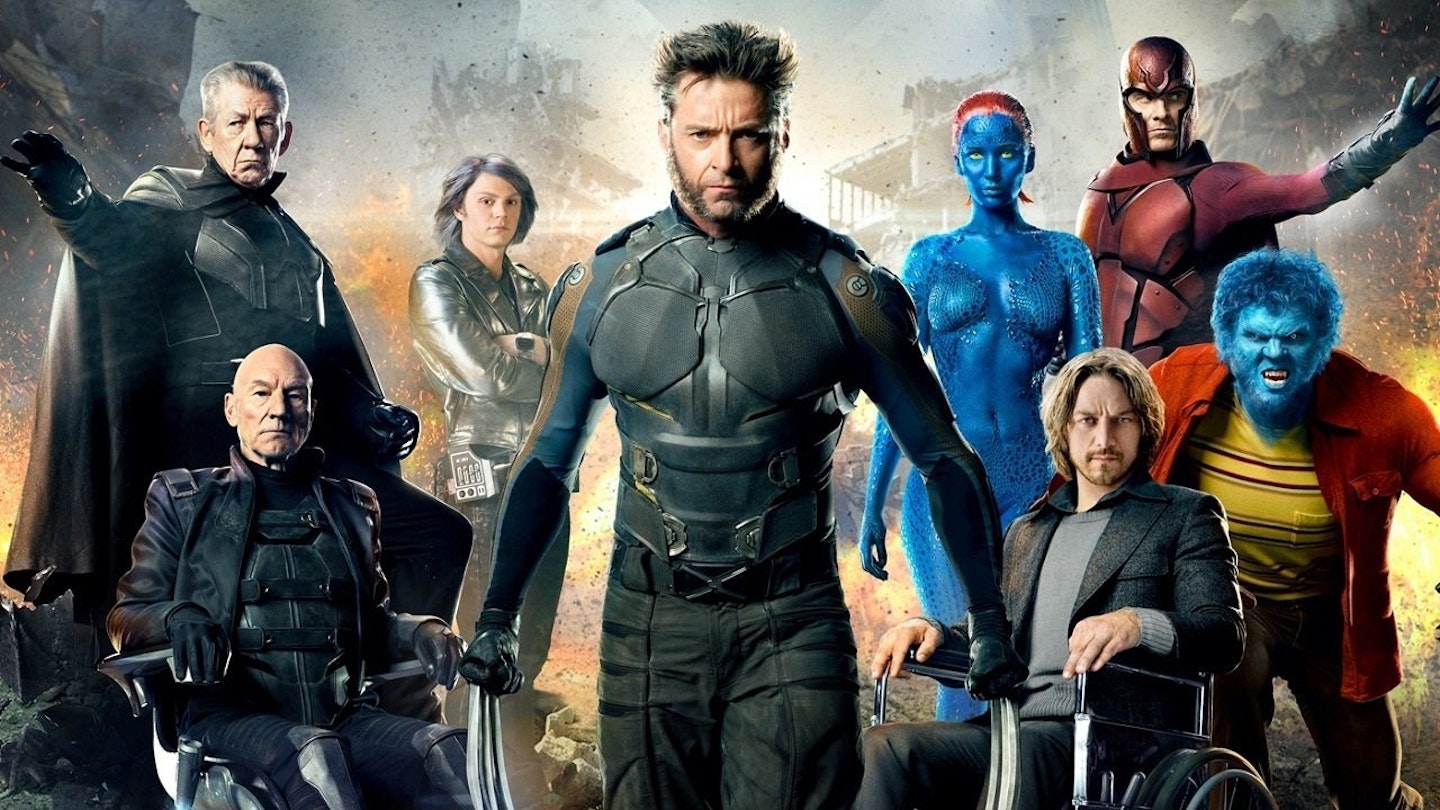Cybernetic killing machines be damned; for the future of artificially-intelligent termination services, X-Men: Days Of Future Past’s future sentinels are where it’s at. The mutant-hunting machines, spawned, in one of the movie’s timeline at least, from Mystique’s DNA, were actually the creation of UK effects house MPC. While fellow VFXers Framestore pioneered the 1970s sentinels, MPC was commissioned to create the highly complex effects work required to give life to Bolivar Trask’s scary vision and pull off the frightening complex Moscow bunker sequence, alongside other work on the film. Empire asked CG supervisor Sheldon Stopsack, a member of MPC’s 396-strong team, to talk through their design.
This early concept art shows a prototype sentinel with roto ventilation ducts built into its back, presumably because even killer ‘bots need air-conditioning. “We got involved in February 2013,” explains Stopsack of MPC’s first Vancouver pitch to Bryan Singer. “He had a clear vision on all the work we did. During the concept stages, it’s always nice to have someone with the vision and contributes to the development.”
Credit: Stefan Levallois and Tuomas Korpi
These three versions of the Sentinel ‘skin’ texture show the evolution towards Mystique-like blades. Rendering each of the Sentinel's 100,000 blades, and enabling them to adopt mutant powers, required entirely new software. “We realised early on that the tools we had in-house wouldn’t cut it,” says Stopsack. The result was the Katana Scene Graph Generator, a tool that enabled each individual blade to be animated and controlled. “It all gets rather complex,” he adds.
Credit: Maciej Kuciara
Although this Sentinel firing beam was one of many changes from the original Kirby/Lee creations, the comic books were a regular reference point for the VFX team. “You want to stay true to [the comic-book universe], so we’d refer back to it and see what we could take out of it,” says Stopsack. “It’s always a starting point, even if you might end up in a completely different direction.”
Credit: Jon McCoy
“They’re about nine-foot tall,” says Stopsack of the final Sentinel, making them a full foot-and-a-half taller than the tallest X-Man, Colossus in steel form. “One of the design criterion was to make them as agile and flexible as possible; we didn’t want to make them a slow-moving lazy robot. They had to be very frightening and threatening.”
Credit: Goran Bukvic
The Michelin Man’s dream date, the Sentinel’s sleak visage was inspired by the aerodynamism of sports cars. Unlike sports cars, there’s no metal involved, although their actual substance remains suitably mysterious. “We never really resolved that question,” concedes the CG super. “Obviously not metal, because of Magneto, and not just organic either. We left it a little abstract.”
Credit: Maciej Kuciara
Like Jessica Ennis, the sleak, rapid Sentinels can run, leap, soar and eviscerate. (Okay, not exactly like Jessica Ennis.) “We had our animators acting out what the sentinels had to do”, recalls the MPC man, “filming themselves using a GoPro camera and doing studies”. So how scary were the Sentinel animators? “If you see them in the corridor in broad daylight?” laughs Stopsack. “Not very!”
Able to sprout knives, drills and probably, for the Sentinel Christmas party at least, corkscrews, Trask’s finest proved at least a little vulnerable in the movie. Only a little, mind you. “I know the weak point but I’m not supposed to tell anyone,” laughs Stopsack. “Can you kill them? Possibly maybe…”
Credit: Maciej Kuciara
The early concepts had the mutant hunters closer to the three-storey monsters of comic-book. “The question with the Sentinels was, ‘How tall can you go?’,” explains Stopsack. “This was an early part of that development process. There are physical restrictions you have to consider,” he adds, referring to the sound stage ceilings. “And nine feet tall can be very intimidating.”
Credit: Maciej Kuciara
Originality was the key for Blink’s portals. “They were one of the hardest things to get right”, concedes Stopsack, “simply because everyone seems to know exactly what a portal looks like”. With a vaguer creative brief to create “something different”, the concept artists got plenty of chances to perfect their paper toss. “We went through god knows how many designs, concepts and effects studies. We ended up with over 100 different variations. The challenge was to come up with something groundbreaking.” Well, vortex breaking.
Credit: Mark Tompkins
In this before-and-after sequence Sunspot (Adan Canto), clad in a roto-animation suit, unleashes the power of a trillion sunbeds on a nearby Sentinel. “The challenge was not to make it look like flames”, says Stopsack, “but to refer back to the actual sun and give it a magnetic, plasma-like look. It’s easy to come up with something that looks like flames, but that’s not the essence of Sunspot.”
